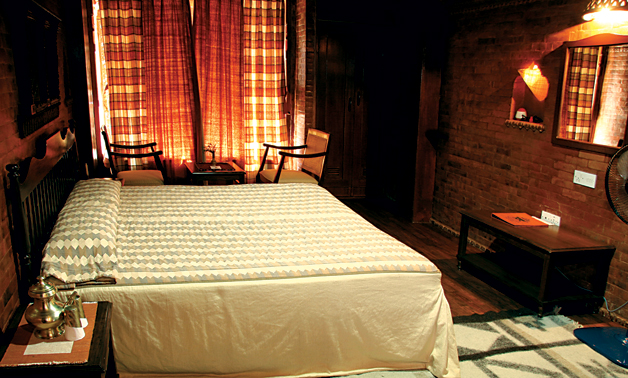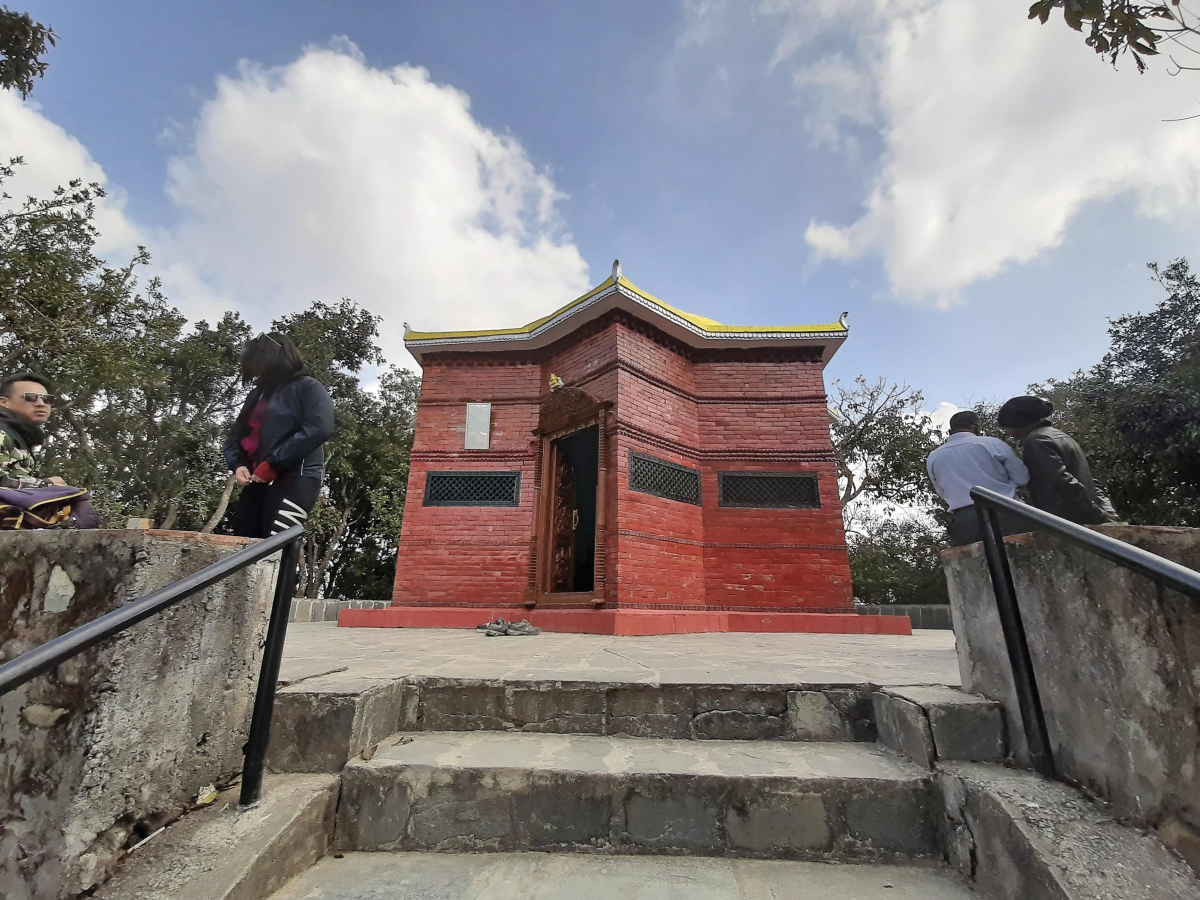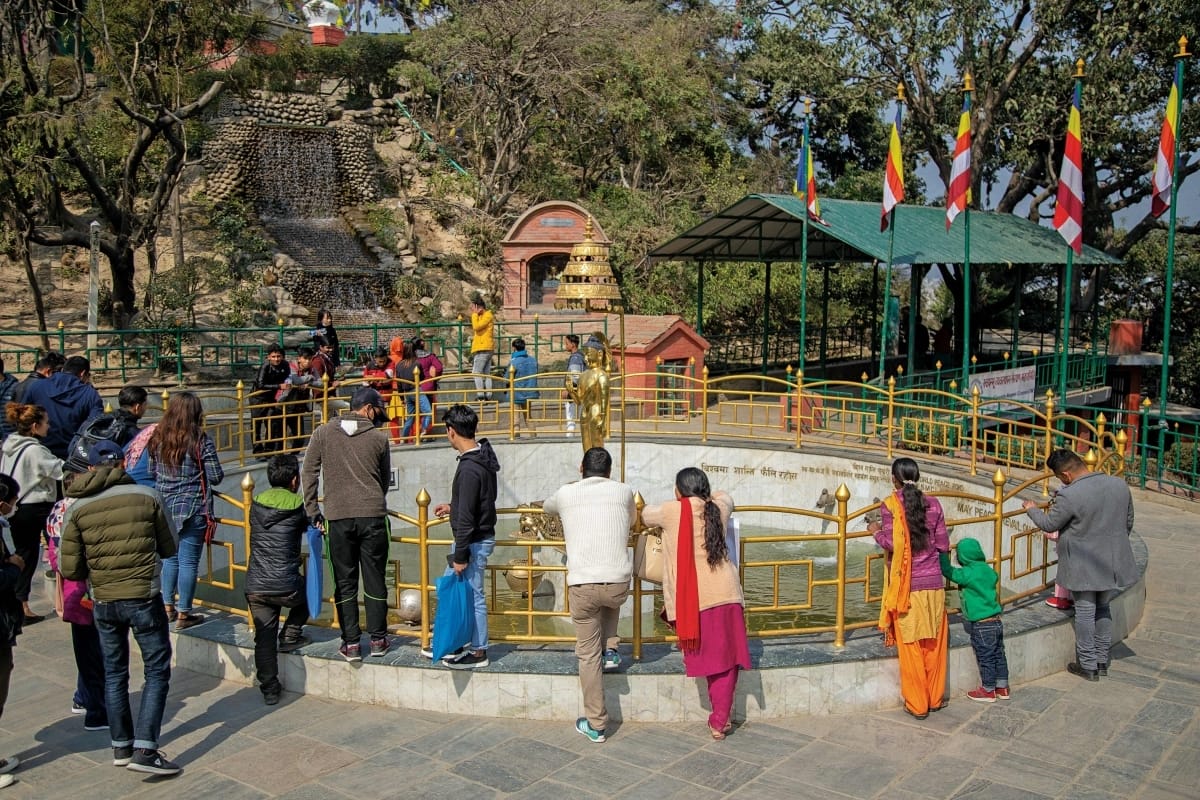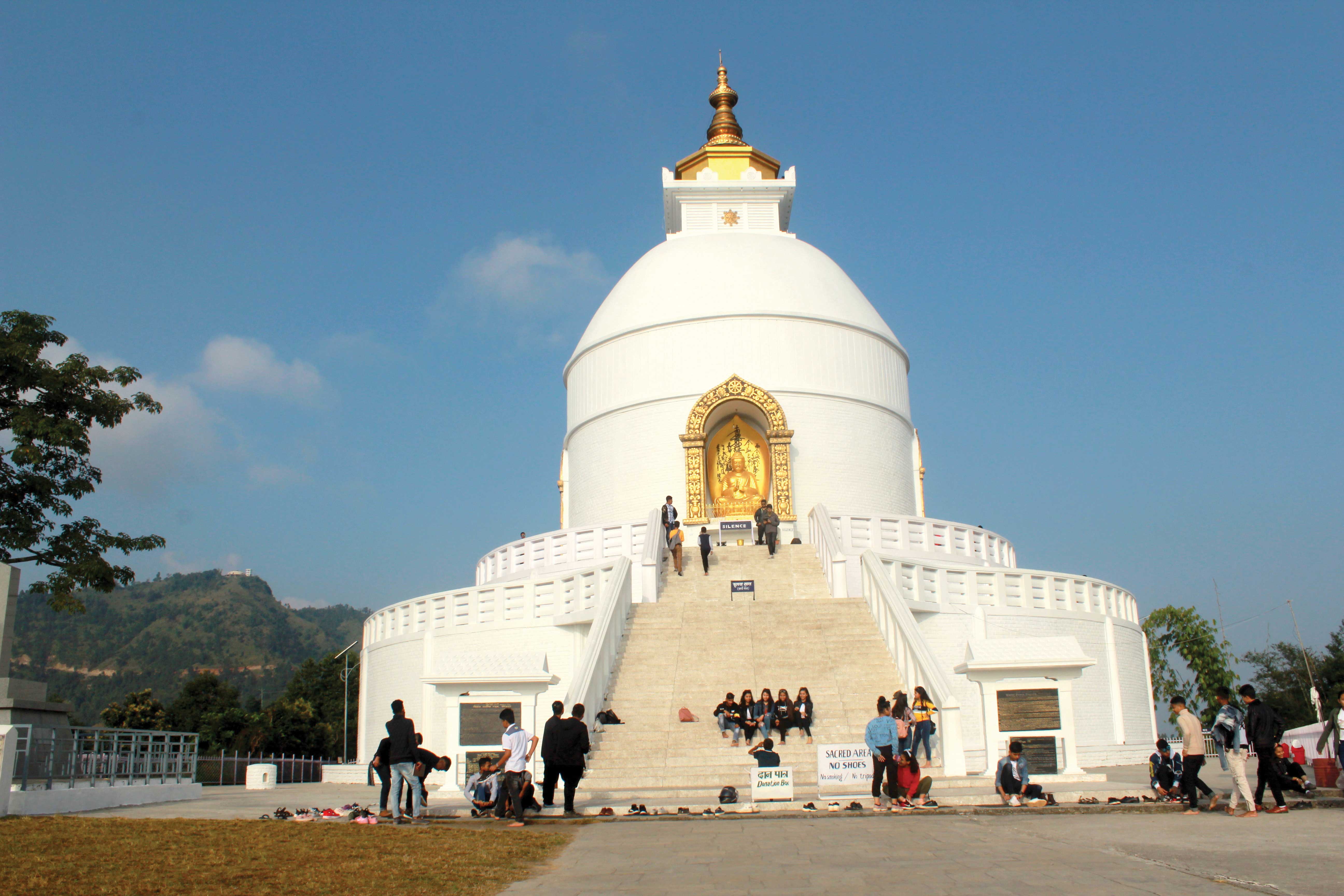
From a distance the building looks like an ancient palace built by one of the erstwhile kings. As you approach, you’ll realize that the place is more akin to the temples seen in and around the valley. Only when you get inside do you realize that it is a one of its kind hotel that promises to preserve, in its own gentle way, Nepal’s history and glorious woodcraft heritage, and introduce the visitors to a novel experience.
Kantipur Temple House is a unique and therefore easily noticeable structure, amidst the other buildings in Jyatha, on the way between Kantipath and Thamel. The hotel promises a different experience… and delivers it.
The rendezvous with Nepal’s history begins right at the gate. The guards manning the entrance are dressed up in black daura suruwal (Nepali national dress) and white patuka (a cummerbund) with a khukuri tucked into it. The dress was originally worn by the warriors of King Prithvi Narayan Shah of Gorkha. He and his armies were wearing exactly the same dress when they invaded and conquered Kathmandu valley in 1769 AD, laying the foundation for Shah rule in Nepal.
At the end of the few steps leading into the hotel compound, two stone lions stand guard in the fashion similar to how you’ll find them at various temples. There are small, but well maintained lawns on the left and the right sides of the compound. On the left is a green belt perfect for a stroll in the morning or to sit and lie down in abandon any time of the day. Trees, well manicured shrubbery and flower pots surround the patch. On the other hand, the highlight of the lawn on the right is the statue of meditating Buddha built inside a temple-like construction. Adding to the aesthetics is the small pond at the base of the temple with hyacinths and other water plants floating in it. The pond water is restored by the five dhunge dharas (traditional water spouts) jutting out from the wall that supports the whole set-up.
The grand display of woodcraft seen from the inner courtyard is one of the hotel’s main attractions. Major woodcarvings on the windows and the balconies of each floor, from bottom to the top, can be seen from the courtyard. The carvings draw inspiration from Nepal’s ancient traditional architecture, particularly from the Malla era.
For example, the struts supporting the overhanging roofs have figures of Lokeshwara standing over erotic human figures, carved on a floral background. The delicate artwork on the windows, including figures of animals, birds and deities, and the intricate shapes with lattice work on the balconies of each floor, recreate the atmosphere prevalent in the bygone era.
Expert craftsmen from Bungamati were called in to replicate the designs seen in the palaces and temples located in the Basantapur Palace area and the Bhaktapur Durbar Square.
The corridors on each floor resemble the circumambulatory of a temple. Small statues of Hindu deities are placed inside the recessed cavities spaced out along the corridors’ walls.
There are standard rooms as well as luxury suites on the first, second and third floors. The fourth floor houses VIP suites that, apart from other facilities, also include a well appointed kitchen. The bed sheets, cushion covers, straw mats, carpets and curtains used in the rooms are locally woven. Even the sinks in the wash rooms are locally made of molded copper, and the soap cases are made from choya (bark of bamboo).
Every effort has been made to minimize the use of plastics and as far as possible only locally made products are used.
Kantipur Temple House has more to it apart from what every other hotel has to offer. There are, however, things that are deliberately excluded to maintain the mood and keep the spirit of the theme on which the hotel is designed. When you are travelling in a foreign country, you are eager to explore its history, culture and lifestyle. In Kathmandu, the Kantipur Temple House hotel helps you do just that.
You have to visit Kantipur Temple House to really appreciate the seriousness given to such terms as ‘preservation’, ‘sustainable livelihood promotion’ and ‘local feel’. And when you add the authentic taste of Nepali hospitality, your Nepal experience is almost complete.
Kantipur Temple House is a gateway destination for tourists on their maiden visit to Nepal. And, for those who are familiar and appreciate Nepal’s inimitable woodcraft heritage, the hotel offers an opportunity to escape the drab and seek timely inspiration from the art.
A stay at Kantipur Temple House is a journey into past, present and future all at once. It lets you experience Nepal’s history, offers present day amenities and comforts, and promises to pave the way Nepal’s hotel industry should function in future.










